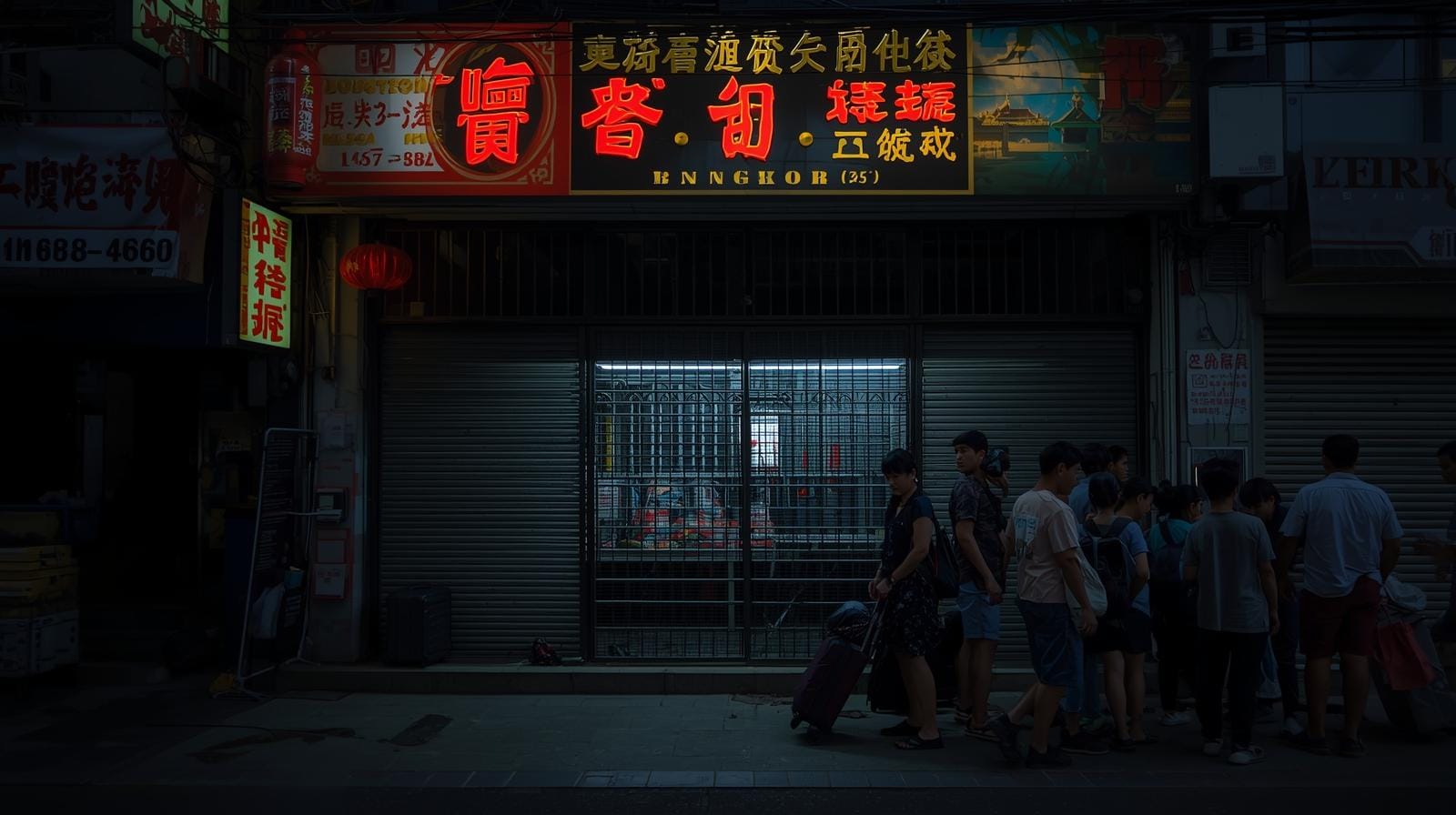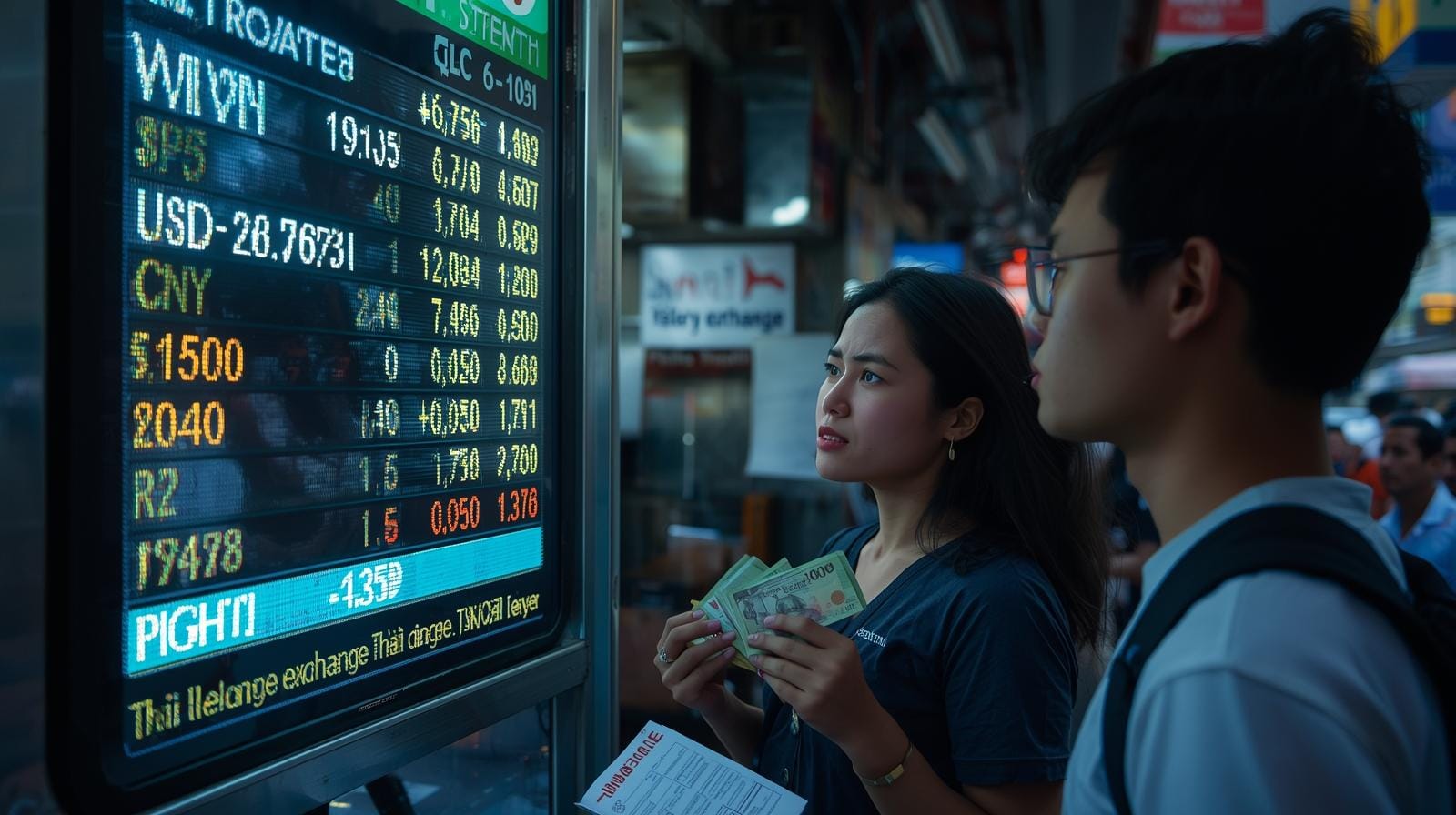A Boom Runs Out of Steam
Thailand’s tourism recovery was supposed to be a straight climb back to glory. Early 2025 saw crowds return to Bangkok’s temples and Phuket’s beaches, fueling optimism that visitor numbers might soon rival the pre-pandemic peak. Officials initially targeted a lofty 39–40 million arrivals for 2025 – nearly on par with 2019. But by mid-year, reality diverged sharply from the rosy forecasts . The Tourism Authority of Thailand (TAT) has slashed expectations to 33.4 million foreign visitors this year, down from 35.5 million in 2024 . Barring the pandemic crash, Thailand hasn’t seen an annual drop in tourism in over a decade. This looming ~6% decline isn’t just a statistic – it’s a gut-check for a nation that counts on travel for nearly 20% of its economy.
“We are monitoring how many Chinese tourists will arrive between November and December after several stimulus measures were implemented to boost this market,” said Tourism Authority Governor Thapanee Kiatphaibool this week , hinting at how crucial a late surge from China could be.
The concern is evident in Bangkok’s halls of power. As the high season approaches, Thailand faces the prospect of a year-on-year drop in arrivals for the first time since reopening its borders. It’s an almost unthinkable reversal of fortune. During the post-Covid rebound of 2022–23, visitor numbers soared each quarter, and industry veterans breathed relief. Now, the brakes are on. Travel hotspots are reporting shorter lines and emptier cash registers – a stark contrast to last year’s frenzy. The flagship airports tell the story: recent data show total arrivals down 7–7.5% so far this year . The hope is that a late-year holiday rush might close the gap, but hope is not a strategy. Thailand’s tourism machine, once roaring, is losing momentum, and all eyes are on the largest missing piece of the puzzle: Chinese travelers.

The China Factor – Missing Tourists, Mounting Fears
No loss is felt as acutely as the vanishing Chinese tourists. In 2019, nearly 11 million Chinese visited Thailand. Even last year, as travel reopened, some 6.7 million Chinese flocked in – Thailand’s #1 source by far . But in 2025, that pipeline has all but dried up. Only about 3.4 million Chinese came in January–September, a shocking 35% plunge from the same period a year prior . The causes trace back to a string of chilling headlines that rippled through Chinese social media. Most notorious was the kidnapping of a young Chinese actor, Wang Xing, in January. Lured to a fake casting in Thailand, he was trafficked across the border to a Myawaddy scam compound before a high-profile rescue . The incident, splashed across Weibo and WeChat, became a PR nightmare for Thai tourism. A related hashtag racked up more than 500 million views as Chinese netizens expressed shock and alarm . Soon after, searches like “How do I cancel my Thailand trip?” surged on Chinese sites . What should have been a blockbuster Lunar New Year travel season turned into a spate of cancellations from China .
“The incident soon dampened Chinese tourists’ enthusiasm for traveling to Thailand,” observed the South China Morning Post, after the actor’s abduction story dominated social media . The once eager “can’t-miss” destination suddenly became a source of anxiety.
Safety fears have clearly taken a toll. Chinese travelers – historically drawn to Thailand’s beaches, malls and temples – are rethinking their plans en masse. It’s not just the kidnapping saga; a drumbeat of reports about scam syndicates, tour bus accidents, and even petty crimes have gained traction online in China. This year, Thailand lost its spot as the top choice for Chinese tourists to regional rivals . Industry surveys over China’s Golden Week holiday found Thailand relegated to “just one alternative” among many, whereas Japan and South Korea leapt ahead thanks to cleaner reputations and, in South Korea’s case, a new visa-free entry offer . Chinese tour groups that once filled Bangkok’s Grand Palace or Pattaya’s streets are few and far between now. And it’s not only Chinese visitors wavering – travel from other key Asian markets has softened too. East Asian arrivals overall are down ~25% this year, according to Thailand’s Ministry of Tourism, with China’s decline the sharpest . ASEAN neighbors have also sent about 8% fewer tourists , as some opt to vacation elsewhere. The cumulative effect is profound: Thailand’s tourism recovery has lost its biggest engine, and the void is palpable on tour docks, in night markets, and in hotel lobbies across the country.

Baht Blues and New Rivals
Thailand’s tourism woes aren’t only about lost confidence – economics are biting, too. The Thai baht has surged more than 15% against major currencies in the past year and a half . For would-be holidaymakers from Europe or Malaysia, that means every hotel night and Pad Thai now costs more in their local currency. The “Land of Smiles” simply isn’t the bargain it was a short while ago. “Our price advantage has eroded,” admits one industry insider, noting that even regional travelers feel the pinch . Airfares to Thailand have also risen, partly due to higher jet fuel costs and robust demand elsewhere. When combined with the strong baht, a week in Thailand suddenly looks pricier compared to Vietnam or Indonesia. Competition across Asia is intensifying: Japan has reclaimed its allure for Chinese and Korean tourists (helped by a weaker yen and its reputation for safety), while South Korea’s visa waivers and Vietnam’s aggressive marketing are drawing more regional visitors . Even Malaysia and Singapore – traditionally smaller competitors – have lured some travelers who might otherwise stop in Bangkok or Phuket. Simply put, Thailand is no longer the default choice for many Asian holidaymakers; it’s now one of several options, and a relatively expensive one at that
“In the past, Thailand was almost a ‘can’t-miss’ destination. This year…the former intense enthusiasm has cooled, and growth is slowing,” says Adith Chairattananon, Secretary-General of the Thai Travel Agents Association, describing the structural shift in Chinese travel trends .
Thailand’s tourism industry is responding with a mix of concern and determination. Private sector leaders are urging urgent upgrades to safety and service standards . The consensus is that Thailand must “refresh” its image for 2026 and shed any perception of being an aging, risky destination. Concrete steps are underway. Police have visibly stepped up tourist security in hotspots, and the government has even begun using high-tech tools – in one case deploying AI systems to hunt scam gangs – in hopes of reassuring the public. The TAT, for its part, is doubling down on promotions: it launched a special “Nihao” campaign to woo Chinese visitors back, and it’s expanding major festivals and events to spark travel interest . For example, the iconic Loy Krathong festival in Sukhothai was extended to two weeks this year to attract more overseas visitors during the autumn season . (As covered in our recent Loy Krathong festival spotlight, this “Festival of Lights” is one of Thailand’s most enchanting cultural draws.) Thailand is only a click away — start planning your next trip below.
Yet, even amid the slump, there are silver linings. Long-haul markets have shown resilience: visitors from Europe and the Americas are actually up by high single-digits this year , and Indian tourism has jumped by about 15%. These higher-spending travelers have provided a cushion, keeping many resorts and tour operators afloat. Some savvy tourists are also seeing opportunity in Thailand’s troubles – thinner crowds and generous discounts. Travel forums report that hotels in Bangkok and Phuket have rolled out steep promotions to fill rooms, and airlines are quietly offering flash sales on Thai routes. “It’s ironic, but the slowdown means bargains and shorter lines for those who do come,” a Bangkok hotel manager notes wryly. In other words, the current downturn may be a boon for adventurous travelers seeking Thailand’s magic without the usual throngs. But for Thailand’s economy at large, fewer tourists – even high-paying ones – mean less fuel in the tank. With competition rising and the currency staying strong, the road ahead will demand nothing less than reinvention to keep Thailand competitive.

Scramble for Solutions – Quality over Quantity?
The tourism slump has not gone unnoticed by Thailand’s new government, which is under pressure to deliver economic results ahead of an election next year. Acknowledging that tourism is an economic lifeline (directly and indirectly accounting for nearly one-fifth of GDP), officials are throwing a kitchen sink of remedies at the problem. In mid-October, the Finance Ministry unveiled tax incentives and soft loans to jolt the sector . Thai citizens can now get a tax deduction up to ฿20,000 for vacationing inside Thailand between late October and December – essentially a paid invitation to hit the beaches and support local hotels. For hard-hit tour operators and hotels, the government is readying below-market loans to keep them afloat through the low season . These tourism-specific moves come on top of a broader stimulus blitz: a ฿44 billion co-payment scheme putting cash in Thai consumers’ pockets, a ฿1.7 trillion (≈$49 bn) public investment budget for infrastructure, and even a plan to buy up bad debts to ease financial stress . Together, these measures aim to nudge Thailand’s overall GDP growth to about 2.2% this year – a modest goal, but one that would be in jeopardy if tourism continues to underperform. (For a deeper dive into the government’s Q4 2025 stimulus push, see our analysis of Thailand’s new stimulus package and its economic impact.)
“Thailand is now seen as an old destination… it’s time to refresh our image with a ‘New Thailand’ concept focusing on value over volume – emphasizing quality, safety, and sustainability,” says Rung Kanjanaviroj, a director at the TAT, underscoring a shift in strategy.
Still stuck in 60-day cycles?
Turn short stays into a 5-year lifestyle with the Destination Thailand Visa — built for digital nomads, remote professionals, and global citizens ready to call Thailand home.
✅ Work online legally
✅ Stay without border runs
✅ Enjoy full-year living flexibility
Caught in this turbulence, Thailand is rethinking what kind of tourism it wants for the future. After years of chasing record arrival counts, the mantra now is “quality over quantity.” Interestingly, even as total visitor numbers slip, average spending per tourist has climbed – roughly ฿46,000 per head, according to tourism ministry data, up from the low 40,000s pre-Covid. That suggests the mix of travelers skewing toward higher-end visitors who stay longer and spend more. These are the so-called “value tourists” Thailand is keen to cultivate. In practical terms, it means courting travelers who choose a week-long wellness retreat over a whistle-stop budget tour, or digital nomads who might rent condos and work remotely from Chiang Mai for a season. The kingdom is already marketing experiences that cater to this upscale, experience-driven segment – from promoting off-grid island escapes for slow travel to developing high-end medical tourism packages. (For example, Thailand is touting places like Ko Phayam – a slow travel paradise – to entice discerning travelers to linger longer.) New long-stay visa schemes (such as a 5-year “Destination Thailand” visa for investors and professionals) have been rolled out to encourage repeat visitors to become semi-residents . And in the wake of scam worries, authorities have tightened oversight on the darker corners of the tourism ecosystem – unlicensed tour guides, zero-dollar tours, and illicit operations – to weed out the elements that tarnish Thailand’s image.
Will the pivot pay off? By focusing on “quality tourists” who spend more and perhaps return year after year, Thailand hopes to offset the dip in headcount. Indeed, some frequent visitors so love the country that they’re investing in vacation condos or pursuing retirement visas, effectively blurring the line between tourist and expat. That bodes well for sectors like real estate and international schools (a knock-on effect of long-term stays). But it’s a high-stakes gamble. A luxury-focused strategy won’t easily replace the sheer volume of past mass tourism. Even with fatter wallets, five million missing Chinese travelers leave a gaping hole that high-spenders from elsewhere can only partially fill. Expat business owners and investors are watching closely, as the fortunes of hotels, retail, and even property development hang in the balance. If the government’s grand plan succeeds, Thailand’s tourism in a few years may look a bit different – fewer charter buses clogging temples, perhaps, but more itineraries centered on authentic, safe, and premium experiences. For now, the priority is to stop the slide. The next few months – with peak season looming and China’s outbound market slowly thawing – will test whether Thailand can reignite its allure or if 2025 will mark the beginning of a more prolonged downturn.

External Sources: Ministry of Tourism and Sports, Thailand • Tourism Authority of Thailand (TAT) Newsroom










